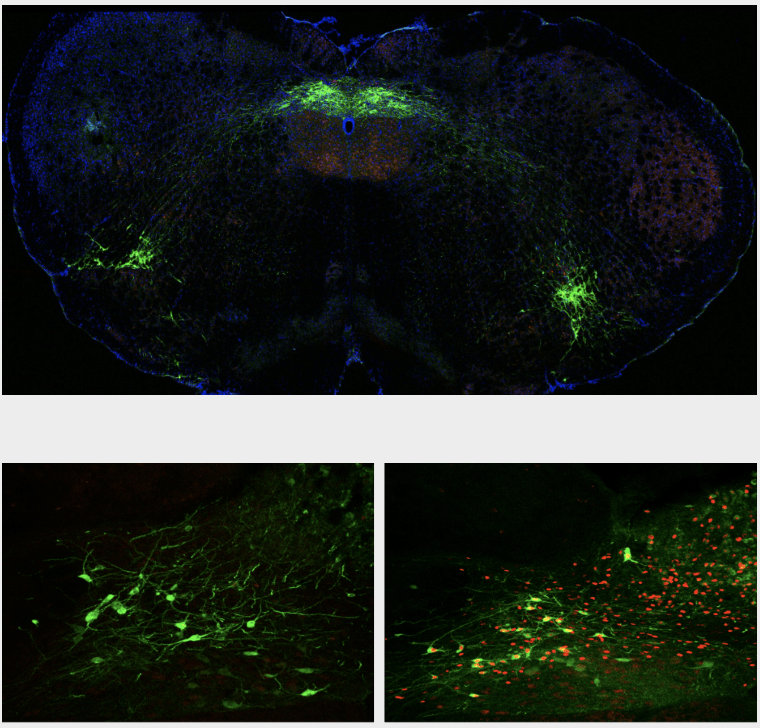Opioid Induced Respiratory Depression
Opioids are frequently used to treat acute and chronic pain, but are prone to misuse and addiction. One serious consequence of opioid addiction is a potentially lethal impairment of breathing. Intravenous administration of fentanyl produces profound and sustained inhibition of breathing known as opioid-induced respiratory depression (OIRD). While the specific mechanisms through which this occurs are not completely understood, it is believed that opioids exert powerful effects on mu opioid receptors (MORs) located in brainstem cardiorespiratory nuclei.
The arterial chemoreflex is an essential protective mechanism for adaptive responses to a generalized decrease in oxygen, known as hypoxia. Hypoxia stimulates peripheral chemoreceptors, which initiates a complex reflex response involving coordinated interactions of brainstem respiratory circuits. The net effect of this response is to elicit compensatory physiological responses, including increased breathing, to facilitate a return to homeostasis. Intravenous fentanyl administration produces a sustained reduction in breathing, ultimately leading to decreased blood oxygen saturation. The failure to respond to periods of sustained hypoxia suggests that opioids exert significant dysfunction in the chemoreflex neural circuits. Therefore, the primary focus of our studies is to evaluate the extent to which these essential brainstem MOR-containing respiratory nuclei are affected by opioid intake.
Current Projects

Central and Peripheral Mechanisms Underlying OIRD
These experiments utilize a rodent model in which conscious, freely-moving rats receive intravenous fentanyl, and cardiorespiratory parameters are measured via a non-invasive oximeter collar to monitor oxygen saturation, heart rate and respiratory rate. Immunohistochemistry is used to evaluate changes in neuronal activation in central respiratory networks. This approach, combined with chemogenetic targeting of specific brainstem respiratory nuclei, allows us to better understand the central mechanisms and neural pathways underlying OIRD.
Our recent work indicates that peripheral opioid receptors also contribute to development of OIRD. Therefore, a secondary objective of the lab is to compare the extent to which central and peripheral opioid receptors mediate OIRD. To test this, subsets of animals are pretreated with the nonselective opioid receptor antagonist naloxone or the peripherally-restricted opioid receptor antagonist naloxone methiodide, and responses to intravenous fentanyl are examined. Our preliminary data indicate that peripheral opioid receptors play an equal or greater role in OIRD compared to central opioid receptors. Future directions involve examining specific peripheral targets for MOR expression to determine the essential regions targeted by opioids.
Assessment of Behavioral and Physiological Changes During Opioid Administration
Another project of the lab involves using an implantable, wireless oximeter to evaluate changes in cardiorespiratory parameters in animals undergoing opioid self-administration. This project is part of a collaboration with the Rogers Laboratory at Northwestern University and the Gereau Laboratory at Washington University. The long-term goal of this project is to monitor tissue oxygen saturation, heart rate and respiratory rate in animals that self-administer fentanyl. We currently do not know if animals will continue to self-administer opioids even while exhibiting adverse effects such as respiratory impairment. These experiments aim to directly compare the behavioral and physiological components of opioid abuse.
Written by Brian Ruyle.